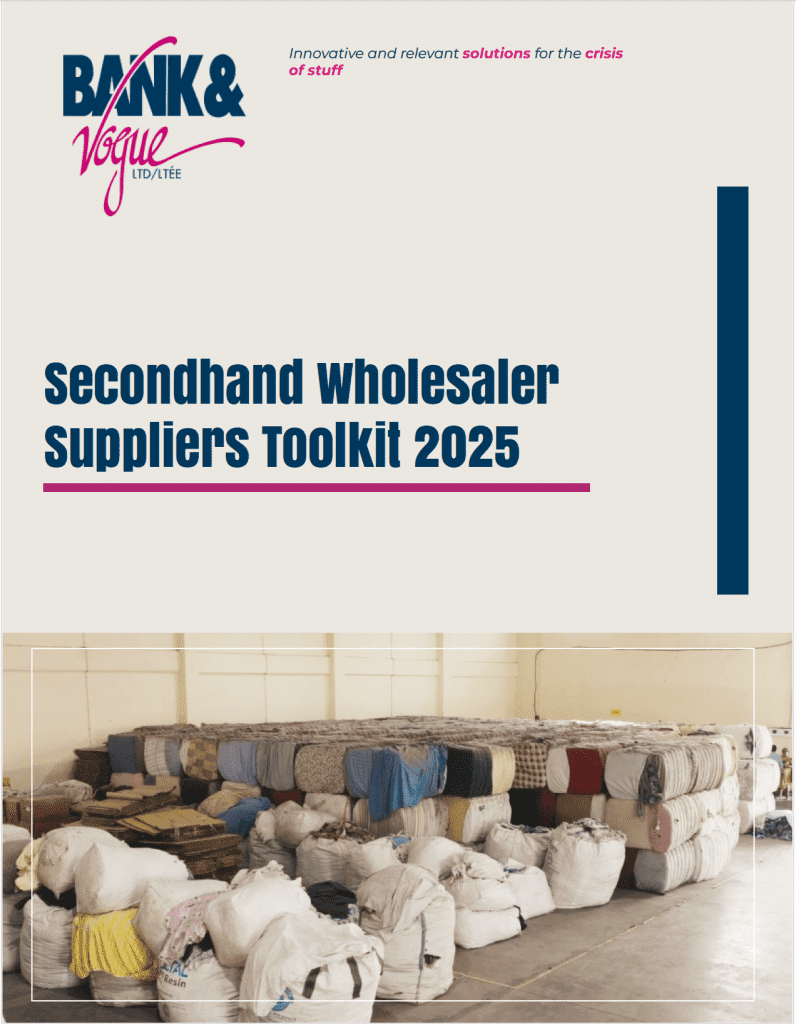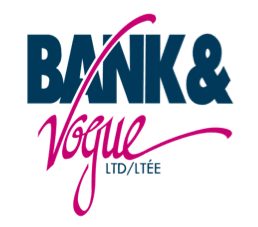Introduction
The secondhand textile industry continues to be a major driver in the global circular economy. With increasing consumer demand for sustainable solutions and the urgent need to reduce textile waste, wholesalers play a critical role in extending the life of garments, reducing environmental impact, and meeting growing market demands. This whitepaper serves as a toolkit for secondhand collectors and charities outlining the latest trends, best practices, and strategies to thrive in 2025.
1. Industry Trends and Market Insights
Global Resale Market Growth
The resale clothing market is expected to grow by 15-20% annually, driven by:
- Consumer Demand for Sustainability: Shoppers are choosing secondhand to reduce waste and embrace affordable, eco-friendly fashion.
- Economic Opportunity: Secondhand fashion offers unique value, with high margins and a lower environmental footprint.
- Regional Opportunities:
- North America and Europe: Dominant markets for premium categories like vintage, credential clothing, and branded secondhand pieces.
- Sub-Saharan Africa, South America, and Asia: Emerging regions for affordable categories like Tropical Mix and lower-grade clothing.
Categories in High Demand
- Credential Clothing: High-quality, unsorted donations with minimal damage.
- Baled Tropical Mix: Lightweight, wearable clothing for warm climates.
- Vintage and Branded Secondhand: High resale value and premium demand in global markets.
- Sorted Winter Apparel: Coats, sweaters, and seasonal wear for colder regions.
- Lower-Grade Textiles: Materials for upcycling, recycling, and industrial use.
2. Collectors and Charities Best Practices
Sorting and Quality Standards
Implementing a meticulous sorting process is essential to meet buyer expectations:
- Grade A: Nearly new, excellent quality, no defects.
- Grade B: Wearable with minor defects (e.g., slight wear or discoloration).
- Grade C: Suitable for recycling, upcycling, or markets with lower affordability thresholds.
Packing and Logistics
Efficient packing ensures seamless transport and cost optimization:
- Bale Standards: 750–1200 lbs per bale, tightly strapped for stability.
- Standard Truck Loading:
- A 53-foot truck can hold approximately 40 – 44 bales.
- Optimize space using stacking strategies.
- The number of bales stacked in each row must be adjusted for the average weight for each bale.
- Documentation: Accurate paperwork is essential for customs clearance:
- Bill of Lading
- Packing Lists
- Commercial Invoices
3. Sustainability and Circular Economy Strategies
Partnering for Circularity
- Collaborate with fashion brands and textile recyclers to supply materials for upcycling and circular collections.
- Offer transparency in sourcing and sorting to meet corporate sustainability goals.
Textile Waste Diversion
- Divert lower-grade textiles to recycling partners for industrial uses (e.g., insulation, wiping rags) or fiber-to-fiber recycling.
- Align with global initiatives to reduce textile waste and promote circularity.
Reducing Carbon Footprint
- Optimize logistics with full truckloads and efficient shipping routes.
- Partner with freight providers using low-emission vehicles or carbon offset programs.
4. Trade Compliance and Ethical Sourcing
International Trade Guidelines
Stay informed on global regulations regarding the export and import of secondhand textiles:
- Customs Duties and Tariffs: Ensure compliance to avoid delays and added costs.
- Regional Restrictions: Monitor policies in Africa, South America, and Asia that may limit textile imports to protect local industries.
Ethical Sourcing Standards
- Implement fair labor practices across all supply chain operations.
- Respect cultural sensitivities by avoiding the inclusion of inappropriate items.
- Obtain certifications (e.g., RCS or GRS) to enhance credibility and trust with buyers.
5. Technology and Data-Driven Solutions
Inventory Management
Leverage technology to improve operations:
- ERP Systems: Track real-time inventory levels to meet demand effectively.
- Analytics Tools: Identify high-demand categories and optimize sourcing strategies.
Digital Collaboration
- Use digital platforms to streamline communication and orders with global buyers.
- Enhance transparency by providing live updates on sorting, packing, and shipping statuses.
6. Building Strong Collectors-Wholesaler Relationships
Collectors Checklist
To maintain strong partnerships with buyers:
- Ensure consistent and reliable stock availability.
- Provide flexible order options (e.g., mixed containers, category-specific orders).
- Maintain timely communication and documentation for smooth operations.
Value-Added Services
- Offer customized sorting or bundling based on buyer needs.
- Share market insights to help buyers make informed purchasing decisions.
7. Bank & Vogue: Supporting Your Circular Business
At Bank & Vogue, we are proud to lead the secondhand wholesale industry by promoting sustainability and circular solutions. We work alongside collectors and charities to:
- Provide insights on global market demands.
- Optimize sorting, packing, and distribution processes.
- Facilitate connections with buyers seeking sustainable textile solutions.
Our mission is to give textiles a second life while building a more circular and profitable future for all stakeholders.
Conclusion
The secondhand textile industry offers unparalleled opportunities for collectors and charities to thrive in a world demanding sustainability and circularity. By adopting best practices, leveraging technology, and aligning with circular economy goals, collectors can unlock new markets, reduce environmental impact, and build lasting relationships with buyers.
At Bank & Vogue, we are committed to supporting your journey toward a successful and sustainable future. Let’s work together to create a world where every garment finds a second life.







